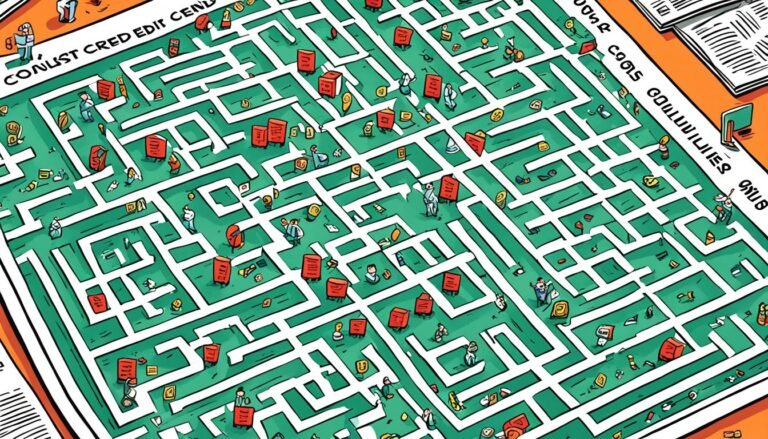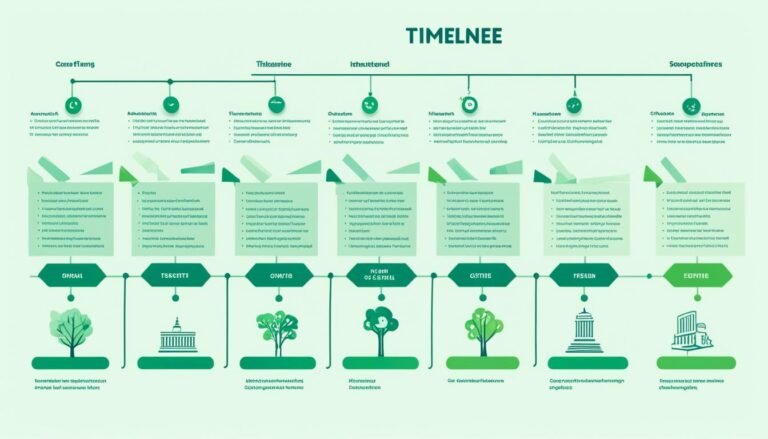Risk Management and Capital Adequacy: Meeting Prudential Standards in Ireland
In 1998, the bank assets in Ireland were more than 300 percent of the country’s GDP. This large figure shows how big Irish banks were before 2008’s financial troubles. Now, Ireland has updated its rules to make sure banks are safer and more stable.
These changes include the Capital Requirements Directive IV (CRDIV) and the Capital Requirements Regulation (CRR). Both are part of EU rules to make banking safer. Ireland has its own laws based on these EU rules. The Department of Finance in Ireland watches over these new rules.
To make sure banks are ready for tough times, new rules have been set up. These include the CRDIV/CRR from 2013 and the BRRD from 2014. The rules are looked after by the Central Bank of Ireland.
This bank also uses special tools to lower risks. These tools help prevent future crises.
Key Takeaways
- The Capital Requirements Directive IV (CRDIV) and Capital Requirements Regulation (CRR) form a single rulebook for EU member states.
- The capital-to-risk-weighted-assets ratio for Irish credit institutions is set at 8 percent, with at least half in equity capital.
- The Counter-cyclical Capital Buffer (CCyB) requires banks to accumulate capital during periods of rising systemic risk.
- The Central Bank of Ireland implements macroprudential policy to ensure financial stability.
- Six banks in Ireland are subject to an Other Systemically Important Institution (O-SII) buffer, which ranges from 0% to 1.5%.
Introduction to Prudential Standards in Ireland
Prudential standards in Ireland have changed a lot, especially after the big global financial crisis. These changes aimed to make the country’s banking system stronger, bring in big reforms, and make sure regulations are tough. The Banking Union, with its key parts like the Single Supervisory Mechanism (SSM) and the Single Resolution Mechanism (SRM), is very important. It’s supported by the European Central Bank. Together, these have a big impact on how Irish banks are watched over and the rules they follow.
Historical Context and Reforms
Ireland’s banking system changes started in the early 2000s but really picked up after 2008. In 2011, the Central Bank of Ireland introduced the Probability Risk and Impact System (PRISM). This was a big change. PRISM helped sort banks into different groups for closer checking, based on their risks. This system is still key to Irish banking supervision.
In 2016, the ‘Risk Reduction Measures’ Package was a big step toward global banking standards. It made sure Irish banks were in good shape with their money and managing risks well.
Role of the Central Bank of Ireland
The Central Bank of Ireland makes sure banks in the country follow the rules. It’s in charge of both giving permission to new banks and watching over them. Since the ECB SSM started in November 2014, the Central Bank looks after smaller banks in Ireland. This shows how important its job is for keeping the money system strong.
Every bank in Ireland must have a license to do business. This rule makes sure only trustworthy banks can take people’s money. The Central Bank has been stricter since 2008, when it was given more power to apply big fines for breaking the rules. This shows it’s serious about making sure banks are safe and honest.
| Regulatory Body | Function |
|---|---|
| Central Bank of Ireland | Sole regulatory authority for authorization and supervision of banks |
| European Central Bank (ECB) | Central supervisory figure under the SSM |
| Data Protection Commission | Oversight of data protection within banks |
| Financial Services and Pensions Ombudsman (FSPO) | Resolution of consumer complaints against financial service providers |
| Competition and Consumer Protection Commission (CCPC) | Enforcement of competition and consumer protection laws |
| Corporate Enforcement Authority (CEA) | Oversight of corporate governance |
In 2020, a Protocol was started between the Central Bank and Auditors. Its goal is to make auditing financial services providers better. It does this by sharing more information.
Ireland is really focused on making sure that banks are well-supervised and safe for everyone who uses them, including consumers and investors.
Capital Requirements and Regulatory Framework
Irish banks’ capital adequacy is key to the financial system’s stability. It’s guided by Basel accords, especially Pillar I. This pillar sets the minimum capital banks need. It makes sure banks have enough capital to cover possible losses. Banks are told to keep at least 8% of their risk-weighted assets in total capital. Of this, Common Equity Tier 1 should be 4.5% and Tier 1 should be 6%.
Pillar II looks at each bank’s unique risks. Regulatory bodies check this through the Internal Capital Adequacy Assessment Process (ICAAP). They figure out if a bank needs more capital than Pillar I requires. Pillar II is vital because it considers the bank’s specific risks and business model. It ensures each bank has enough capital during hard times.
Pillar III focuses on making banks more transparent. It requires banks to share details about their risk management. This sharing helps the market and stakeholders understand a bank’s risks better. Irish banks disclose these details in their annual financial reports to stay transparent.
The buffer requirement further protects the financial system. It includes the Capital Conservation Buffer and the Counter-cyclical Capital Buffer (CCyB). The Conservation Buffer needs banks to set aside 2.5% of their assets. The CCyB is set by the Central Bank of Ireland to fight trends that make the economy weaker and to make the financial system stronger.
Regulations come from laws like the Capital Requirements Regulation (EU) No 575/2013. There are also local laws, including the Central Bank Act 1971 and the Central Bank (Supervision and Enforcement) Act 2013. Banks have to follow the European Union (Capital Requirements) Regulations 2014 and the European Union (Alternative Investment Fund Managers) Regulations 2013, too.
In Ireland, banks use the Standardized Approach (SA) or the Internal Ratings Based (IRB) approach for credit risk. Most Irish banks prefer the IRB approach for loans. It considers the loan’s history and its risk. This method makes sure banks keep enough money for loans that are more likely to not get paid back.
Here’s a summary of important rules for Irish banks’ capital needs:
| Component | Description |
|---|---|
| Minimum Capital Requirements | Set at 8% of RWAs under Pillar I |
| Common Equity Tier 1 (CET1) | 4.5% of RWAs |
| Tier 1 Capital | 6% of RWAs |
| Capital Conservation Buffer | 2.5% of RWAs, phased-in from 2016 to 2018 |
| Other Systemically Important Institution (O-SII) Buffer | 0% – 1.5% for six regulated banks |
| Internal Capital Adequacy Assessment Process (ICAAP) | Assessment under Pillar II |
| Counter-cyclical Capital Buffer (CCyB) | Set quarterly by the Central Bank for Irish exposures |
Basel III Compliance and its Impact on Irish Banks
Basel III rules in Ireland are changing the banking game. They are all about making banks stronger. This includes having enough cash, being ready for hard times, and handling changes in markets smoothly.
Overview of Basel III
Basel III is a big, global plan after the 2008 financial crisis. Its goal is to make banks tougher. This means they can take on problems better, manage risks more clearly, and show what they are doing more openly.
Implementation in Ireland
Ireland’s banks had to change a lot to follow Basel III. The process made them look at risks in new ways. This led to finding they needed more money set aside. For Irish banks, this extra money was a large chunk, around EUR 2.5 billion.
Challenges and Opportunities
Adapting to Basel III is a big task for Irish banks. It meant they needed a lot more money. But, there’s good news too. Keeping some help for smaller businesses could reduce this. Also, some new rules might lower the extra money they need to keep by 17%.
Beyond the money part, Basel III made Irish banks more solid. Fewer loans are going bad. This shows the banks are in a better shape. They are ready to face rough economic times and help the country grow.
In the end, Basel III in Ireland is tough but worth it. It’s making the banking world better and stronger.
Internal Capital Adequacy Assessment Process (ICAAP)
The Internal Capital Adequacy Assessment Process (ICAAP) is vital in Ireland’s banking rules. It makes banks always check they have enough money. This process helps deal with risks like credit issues, market changes, and daily operation problems.
Key Components of ICAAP
In setting up ICAAP, banks need to make sure their risk models work well. They must be good for what the bank does. The main steps are:
- Comprehensive Risk Management: Looking at all the risks and how they affect the bank.
- Governance and Oversight: Making sure the management is done well.
- Capital Planning: Planning to keep enough money in the bank.
The ECB Guide says a solid ICAAP is key to good risk management and having enough money. It gives seven basic rules to check how good an ICAAP is. It also wants banks to talk openly with inspectors about their plans.
Assessment Methods and Stress Testing
ICAAP methods are set up to show how strong a bank is in tough times. Stress tests are very important in Ireland. They find where a bank might fall short and what to do about it. The ICAAP says:
It’s very important for banks to have plenty of good money. This really helps in tough financial times, which we’ve seen not long ago.
Different stress test methods are used now because of what we learned from the last crisis. The ICAAP is made to fit each bank’s specific risks and needs. It helps make sure banks in Ireland are ready for anything.
Numbers show how well risks are looked at, how much money is saved, and if all the rules are followed. Having a strong ICAAP is key to making sure Ireland’s money is safe.
Risk Management and Capital Adequacy: Meeting Prudential Standards in Ireland
An effective integrated risk governance framework is crucial in Ireland. It benefits banks by making them stronger and more prepared for risks. This framework has several key parts.
Integrated Risk Governance Framework
Ireland is shifting towards a risk-based supervisory approach. They use the MYA and RTF initiatives. The Probability Risk and Impact SystemTM (PRISMTM) is key here. It assesses risks systemically, especially for big firms affecting financial health and consumers.
Supervisory Review and Evaluation Process (SREP)
The harmonized SREP has made the European banking sector more resilient in Ireland. It combines all supervisory information and the results of various assessments. Not meeting SREP rules can lead to severe consequences. It ensures banks are careful and improves financial reporting standards. Making SREP processes faster also boosts the SSM’s operational efficiency.
- Risk-based supervision and supervisory judgment
- Integration of multi-year assessment (MYA) and risk tolerance framework (RTF)
- Rebalancing of capital and qualitative measures
Regulatory Reporting and Transparency
Transparency is vital in bank governance. Regulatory reporting is a key part. Banks in Ireland must follow strict rules to ensure they report their finances accurately. This helps monitor the financial system and keep public trust strong. The Central Bank of Ireland reviews asset quality, nonperforming assets, and recovery reports monthly, ensuring close oversight.
| Aspect | Details |
|---|---|
| Banking Sector Assets | Over 300% of GDP |
| Concentration | 3 largest banks account for 47% of total assets |
| Profitability | Among the highest in Europe |
| Capital Ratio | Minimum 8% with half in equity capital |
| Compliance | Regular monthly reviews, large exposure monitoring |
Asset Quality Review and Capital Buffers
The Irish banking sector is always changing. It’s important to check the quality of bank assets. This makes sure banks are stable financially. The Asset Quality Review (AQR) is key. It looks deeply into the value and health of banks’ financial stuff. Since the 2016 Financial System Assessment Program, banking checks have improved a lot. They’re better at handling problem loans and making sure there’s enough money.
Importance of Asset Quality Review
A good AQR framework means banks know exactly what their assets are worth.
This is crucial today with worries like COVID-19 and geopolitical issues. With a strong AQR, a bank is ready for tough times. It helps make sure the bank has enough money and is safe from future problems.
Types of Capital Buffers
Besides the AQR, banks are also told to keep different types of money buffers. These buffers help banks handle shocks and stay strong. The capital conservation buffer makes sure a bank can survive hard times without falling below required levels of money. There are also other buffers for different kinds of banks. For example, Global Systemically Important Institutions (G-SIIs) and Other Systemically Important Institutions (O-SIIs) have special buffers. These address the unique big risks they might cause.
The table below shows what these buffer types do:
| Type | Description | Purpose |
|---|---|---|
| Capital Conservation Buffer | A mandatory capital buffer to absorb losses during financial turbulence. | Improves the bank’s resilience to economic downturns. |
| Counter-Cyclical Buffer | Ensures banks build up capital in good times which can be used in periods of stress. | Modulates the impact of economic cycles on financial stability. |
| G-SII Buffer | Specific to Global Systemically Important Institutions to mitigate systemic risk. | Reduces the systemic impact of large-scale institution failures. |
| O-SII Buffer | Applied to Other Systemically Important Institutions to address specific risks. | Enhances stability in institutions crucial to the financial system. |
With all these measures and careful checks on big risks, Irish banks are strong. They can keep going even when the economy is shaky. And, they keep the people using them safe.
Conclusion
Making sure that Irish banks follow rules and manage risks well is key. This keeps them honest and trusted. Rules change to help banks face new issues, making them stronger worldwide. For example, using the latest rules (like CRD V) helps banks stay stable. It connects their finance and risk info better, speeds up work, and makes following rules easier.
In Ireland, many in the finance world work together to handle risks from climate change. They want to do better by learning and sharing new ways to fight climate risks. This teamwork is crucial. It makes the banking system more solid against the dangers of climate change.
Despite changes and new rules (like Basel III and more consolidation), Ireland stays ahead. It works hard to keep its banks safe and steady. This helps banks deal with tough situations, keep their money in good shape, and support the economy. Being watchful and ready for change, Irish banks are set for the future, whatever new rules and challenges come their way.
Source Links
- Capital Requirements and Macroprudential Policy
- Report on the Observance of Standards and Codes: Ireland — Banking Supervision
- Regulatory Requirements and Guidance for MiFID Firms
- Capital Requirements: what is changing under the new prudential regime?
- Supervision – How we regulate
- KKR Capital Markets (Ireland) Pillar III (1)
- S.I. No. 10/2023 – Central Bank (Supervision and Enforcement) Act 2013 (Section 48(1)) (Investment Firms) Regulations 2023
- The banking crisis in Ireland
- Microsoft Word – 01-DA spring 2019 FINAL EDITS.docx
- ECB Guide to the internal capital adequacy assessment process (ICAAP)
- CEBS Paper on the Internal Capital Adequacy Assessment Process for Smaller Institutions
- New Prudential Regime for MiFID Investment Firms
- Assessment of the European Central Bank’s Supervisory Review and Evaluation Process
- PRISM | Central Bank of Ireland
- No title found
- ECB Banking Supervision: SSM supervisory priorities for 2024-2026
- Financial Stability Review 2023 I
- Prudential Consolidation: A Perfect Storm?
- Risk Management Working Group
- Prudential Regulation Authority Business Plan 2024/25








